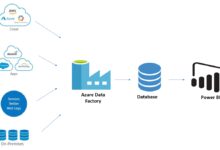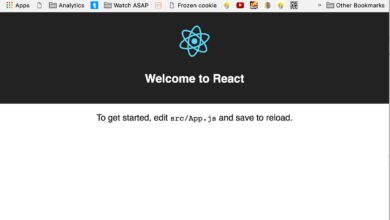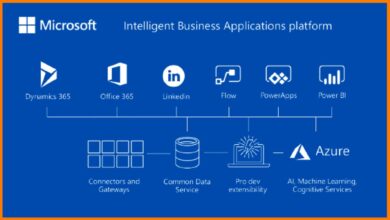Azure Log In: 7 Ultimate Tips for Secure & Fast Access
Logging into Azure doesn’t have to be complicated. Whether you’re a developer, IT admin, or business owner, mastering the azure log in process is your first step toward seamless cloud management. Let’s break it down—simply, securely, and smartly.
Understanding Azure Log In: The Gateway to Microsoft Cloud

The azure log in process is more than just entering a username and password—it’s your secure entry point to Microsoft’s vast cloud ecosystem. From managing virtual machines to monitoring applications, everything starts with a successful login. But with multiple identity types, authentication methods, and access levels, knowing how the system works is essential.
What Is Azure Log In?
The term azure log in refers to the authentication process that grants users access to the Microsoft Azure portal, Azure services, and associated resources. This login is powered by Azure Active Directory (Azure AD), Microsoft’s cloud-based identity and access management service.
- Azure log in authenticates users via Azure AD, not traditional on-premises Active Directory.
- It supports various account types: personal Microsoft accounts, work/school accounts, and guest accounts.
- Access can be granted across global data centers, provided the user has proper permissions.
“Every interaction with Azure begins with identity. Secure logins are the foundation of cloud security.” — Microsoft Azure Security Documentation
How Azure AD Powers the Login Process
Azure Active Directory is the engine behind every azure log in. Unlike legacy systems, Azure AD is built for the cloud, supporting modern authentication protocols like OAuth 2.0, OpenID Connect, and SAML 2.0.
- When you initiate an azure log in, Azure AD verifies your identity and issues security tokens.
- These tokens are used by Azure services to authorize access without re-authenticating.
- Azure AD also integrates with on-premises directories via Azure AD Connect for hybrid environments.
For organizations, this means centralized control over who can access what, from anywhere in the world. You can learn more about Azure AD’s role in authentication at Microsoft’s official Azure AD documentation.
Types of Accounts Used in Azure Log In
Not all logins are the same. Depending on your role and organization, you might use one of several account types during the azure log in process:
- Work or School Account: Assigned by an organization using Azure AD. Most common for enterprise users.
- Personal Microsoft Account (MSA): Used for individual Azure subscriptions (e.g., free tier users).
- Guest User Account: External collaborators invited via Azure AD B2B collaboration.
Each account type has different permission scopes and security policies. For example, a guest user may only access specific apps or resources, while a global admin has full control.
Step-by-Step Guide to Azure Log In
Performing an azure log in correctly ensures you gain access without delays or security risks. Whether you’re logging in for the first time or troubleshooting access, following the right steps is crucial.
Standard Azure Portal Login Process
The most common way to perform an azure log in is through the Azure portal at portal.azure.com. Here’s how it works:
- Navigate to https://portal.azure.com.
- Enter your email address (e.g., user@company.com or personal Microsoft account).
- Click Next, then enter your password.
- If multi-factor authentication (MFA) is enabled, complete the verification step (e.g., approve a notification in Microsoft Authenticator).
- Upon successful authentication, you’ll be redirected to the Azure dashboard.
This process may vary slightly depending on your organization’s sign-in policies, such as conditional access rules or custom domains.
Logging In with Organizational vs. Personal Accounts
One key difference in the azure log in experience is whether you’re using a work/school account or a personal Microsoft account.
- Work/School Account: Typically managed by an IT department. Login may redirect to a custom sign-in page with corporate branding and stricter security policies.
- Personal Account: Used for individual Azure subscriptions. Simpler login flow but limited administrative capabilities unless elevated.
It’s important to select the correct account type during login, especially if you have multiple Microsoft identities. Using the wrong account can lead to permission errors or inability to access resources.
Troubleshooting Common Login Issues
Even with a simple process, users often encounter issues during azure log in. Here are some frequent problems and their solutions:
- “User not found” error: Verify the email address is registered in Azure AD. Check for typos or incorrect domains.
- Password expired or reset required: Contact your administrator or use self-service password reset (SSPR) if enabled.
- MFA not working: Ensure your authenticator app is synced, or request a different verification method (e.g., SMS, phone call).
- Access denied to subscription: You may lack role-based access control (RBAC) permissions. Ask your admin to assign the appropriate role.
Microsoft provides a detailed user help portal for end-users facing login issues.
Multi-Factor Authentication: Securing Your Azure Log In
In today’s threat landscape, a simple password isn’t enough. Multi-factor authentication (MFA) adds a critical layer of security to every azure log in, ensuring that even if credentials are compromised, unauthorized access is blocked.
Why MFA Is Essential for Azure Security
MFA requires users to verify their identity using at least two of the following: something you know (password), something you have (phone or token), or something you are (biometrics).
- According to Microsoft, MFA can block over 99.9% of account compromise attacks.
- It’s especially vital for admin accounts with elevated privileges.
- Compliance standards like ISO 27001, HIPAA, and GDPR often mandate MFA for cloud access.
Without MFA, your azure log in is vulnerable to phishing, brute force, and credential stuffing attacks.
Setting Up MFA for Your Azure Account
Enabling MFA enhances the security of your azure log in significantly. Here’s how to set it up:
- Sign in to the Azure portal as an administrator.
- Navigate to Azure Active Directory > Security > Multifactor Authentication.
- Select the users you want to enable and click Enable.
- Users will be prompted to register their second factor on next login.
Alternatively, you can enforce MFA through Conditional Access policies, which provide more granular control based on user, device, location, and risk level.
MFA Methods Supported in Azure Log In
Azure supports several MFA methods, giving users flexibility while maintaining security:
- Microsoft Authenticator App: Push notifications or time-based one-time passwords (TOTP).
- Phone Call: Automated call to a registered number.
- Text Message (SMS): One-time code sent via SMS (less secure than app-based methods).
- Hardware Tokens: FIDO2 security keys like YubiKey for passwordless login.
- Biometric Authentication: Windows Hello or Apple Touch ID when integrated with Microsoft Authenticator.
Organizations are encouraged to adopt phishing-resistant methods like FIDO2 keys or the Microsoft Authenticator app.
Single Sign-On (SSO) and Azure Log In Experience
Single Sign-On (SSO) transforms the azure log in process by allowing users to access multiple applications with one set of credentials. This improves productivity and reduces password fatigue.
How SSO Works with Azure AD
Azure AD acts as an identity provider (IdP) in SSO scenarios, enabling seamless access to thousands of cloud apps like Salesforce, Dropbox, and Office 365.
- When a user logs into Azure, they get a session token.
- This token is used to automatically authenticate them to connected SaaS applications.
- No need to re-enter credentials for each app.
SSO relies on protocols like SAML, OAuth, and OpenID Connect. Azure AD supports both pre-integrated apps from the Microsoft App Gallery and custom applications.
Configuring SSO for Enterprise Applications
IT administrators can configure SSO for enterprise apps through the Azure portal:
- Go to Azure Active Directory > Enterprise Applications.
- Select an application and click Single sign-on.
- Choose the mode: SAML, Password-based, or OIDC.
- Configure the settings (e.g., Identifier, Reply URL) and download the metadata if needed.
- Test the configuration using the built-in test tool.
Detailed setup guides are available in the Azure application management documentation.
Benefits of SSO in Azure Log In Workflows
Implementing SSO offers several advantages for both users and administrators:
- Improved User Experience: Fewer passwords to remember means faster access.
- Reduced IT Helpdesk Load: Fewer password reset requests.
- Enhanced Security: Centralized control over access and easier enforcement of MFA.
- Compliance Reporting: Audit logs show who accessed what and when.
For large organizations, SSO is not just a convenience—it’s a security and operational necessity.
Conditional Access Policies: Smart Controls for Azure Log In
Conditional Access (CA) is one of Azure AD’s most powerful features, allowing organizations to apply dynamic access controls during the azure log in process based on real-time risk and context.
What Are Conditional Access Policies?
Conditional Access policies let you enforce rules such as:
- Require MFA when logging in from outside the corporate network.
- Block access from unmanaged devices.
- Allow access only during business hours.
- Require compliant devices (e.g., encrypted, up-to-date OS).
These policies are evaluated at login time and can allow, require a step, or block access entirely.
Creating Your First Conditional Access Policy
To create a Conditional Access policy:
- Sign in to the Azure portal as a Global Administrator or Conditional Access Administrator.
- Navigate to Azure Active Directory > Security > Conditional Access.
- Click + New policy.
- Give it a name (e.g., “Require MFA for External Access”).
- Under Users and groups, select who the policy applies to.
- Under Cloud apps or actions, choose the target services (e.g., Microsoft Azure Management).
- Under Conditions, specify location, device state, or risk level.
- Under Access controls, choose Grant and select “Require multi-factor authentication”.
- Enable the policy and click Create.
Microsoft recommends starting with a “report-only” mode to test the impact before enforcing.
Best Practices for Conditional Access in Azure Log In
To maximize security and minimize disruption, follow these best practices:
- Start with Report-Only Mode: Observe policy impact before enforcement.
- Exclude Emergency Access Accounts: Always exclude break-glass accounts to prevent lockout.
- Use Built-in Templates: Azure offers templates like “Baseline: MFA for admins” for quick setup.
- Monitor Sign-In Logs: Use Azure AD logs to detect policy violations and refine rules.
For more guidance, visit Microsoft’s Conditional Access documentation.
Passwordless Authentication: The Future of Azure Log In
The future of azure log in is moving beyond passwords. Passwordless authentication eliminates the risks associated with weak or stolen passwords by using more secure methods like biometrics and security keys.
What Is Passwordless Authentication?
Passwordless authentication allows users to log in without entering a password. Instead, they use:
- FIDO2 security keys (e.g., YubiKey)
- Microsoft Authenticator app (push notifications or biometrics)
- Windows Hello for Business
These methods rely on public-key cryptography, where the private key never leaves the user’s device, making them highly resistant to phishing and replay attacks.
Enabling Passwordless Sign-In in Azure
To enable passwordless authentication:
- Go to Azure AD > Security > Authentication methods.
- Under FIDO2 Security Keys or Microsoft Authenticator, enable the method.
- Assign it to users or groups.
- Instruct users to register their device via My Sign-Ins.
Once set up, users can sign in using their registered key or app instead of a password.
Advantages of Going Passwordless in Azure
Adopting passwordless azure log in offers compelling benefits:
- Stronger Security: Eliminates password-based attacks like phishing and credential stuffing.
- Better User Experience: Faster, simpler logins with biometrics or tap-to-approve.
- Lower IT Costs: Reduces password reset tickets and helpdesk workload.
- Compliance Ready: Meets modern security standards requiring phishing-resistant MFA.
Microsoft reports that organizations using passwordless methods see up to a 44% reduction in identity-related helpdesk calls.
Managing Azure Log In for Teams and Admins
For IT teams, managing azure log in at scale is about more than just access—it’s about governance, monitoring, and resilience.
Role-Based Access Control (RBAC) and Login Permissions
RBAC ensures users have the right level of access. During azure log in, permissions are evaluated based on assigned roles.
- Owner: Full access, including managing permissions.
- Contributor: Can create and manage resources but not assign roles.
- Reader: View-only access.
- Custom Roles: Tailored permissions for specific needs.
Always follow the principle of least privilege—grant only the access needed to perform a job.
Monitoring Sign-Ins and Audit Logs
Azure provides detailed sign-in and audit logs to track every azure log in attempt.
- Go to Azure AD > Sign-in logs to view successful and failed attempts.
- Filter by user, app, IP address, or status.
- Use Azure Monitor and Log Analytics for advanced analysis.
Regular log reviews help detect suspicious activity, such as logins from unusual locations or at odd hours.
Emergency Access and Break-Glass Accounts
Every organization should have at least two break-glass accounts—privileged accounts used only in emergencies (e.g., when MFA systems fail).
- Store credentials securely (e.g., in a safe or password manager).
- Do not enable MFA or Conditional Access on these accounts.
- Monitor their usage closely—any login should trigger an alert.
These accounts ensure you never lose access to your Azure environment during critical outages.
What if I forget my Azure account password?
If you’re using a work or school account, contact your administrator or use the self-service password reset (SSPR) tool at passwordreset.microsoftonline.com. For personal Microsoft accounts, visit account.live.com/resetpassword to recover your account.
Can I use the same Azure login for multiple subscriptions?
Yes, a single Azure AD account can access multiple subscriptions. Administrators can assign roles across subscriptions, allowing users to switch between them in the Azure portal using the directory and subscription switcher.
Why am I being asked to verify my identity every time I log in?
This may happen if your session isn’t being remembered. Ensure you check “Don’t ask again for 14 days” during MFA verification. Also, verify that your browser allows cookies and isn’t in private mode. Conditional Access policies may also require frequent reauthentication based on risk or device compliance.
How do I switch between Azure directories during login?
After logging in, click your profile icon in the top-right corner of the Azure portal and select Switch directory. You must have access to multiple directories for this option to appear. Alternatively, use the directory switcher in the portal’s top navigation bar.
Is there a mobile app for Azure log in?
While there’s no standalone Azure portal app, you can use the Microsoft Authenticator app for secure azure log in via MFA and passwordless authentication. Additionally, the Azure app (available on iOS and Android) lets you monitor resources and receive alerts, though full management is best done via browser.
Mastering the azure log in process is essential for anyone working with Microsoft’s cloud platform. From understanding the basics of Azure AD to implementing advanced security features like MFA, Conditional Access, and passwordless authentication, every step enhances both security and usability. By following best practices in access management, monitoring, and emergency planning, organizations can ensure smooth, secure, and scalable cloud operations. Whether you’re a beginner or an experienced admin, investing time in optimizing your azure log in experience pays off in security, efficiency, and peace of mind.
Recommended for you 👇
Further Reading:









